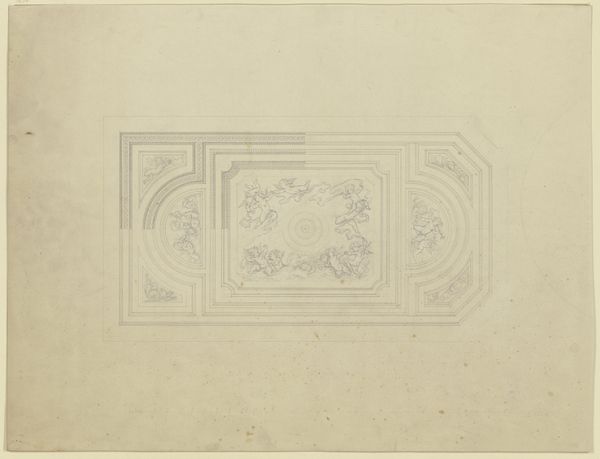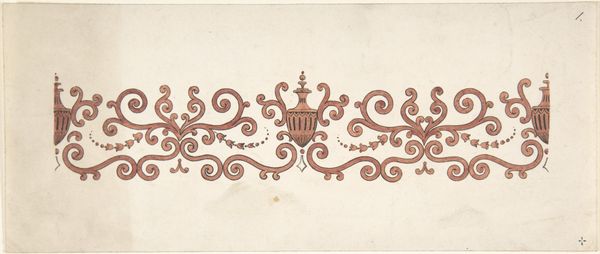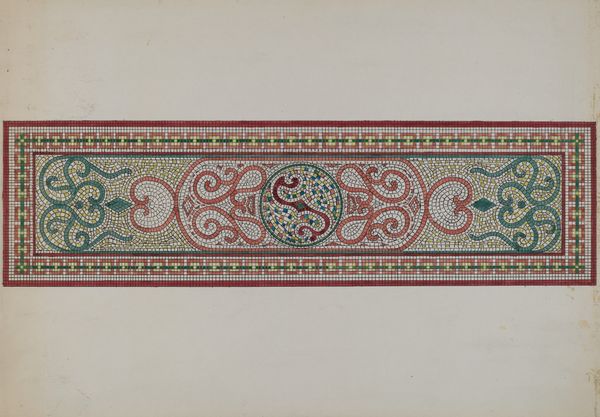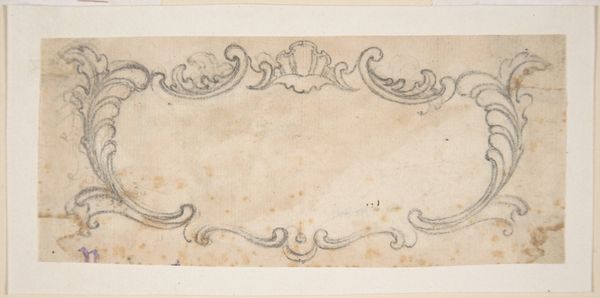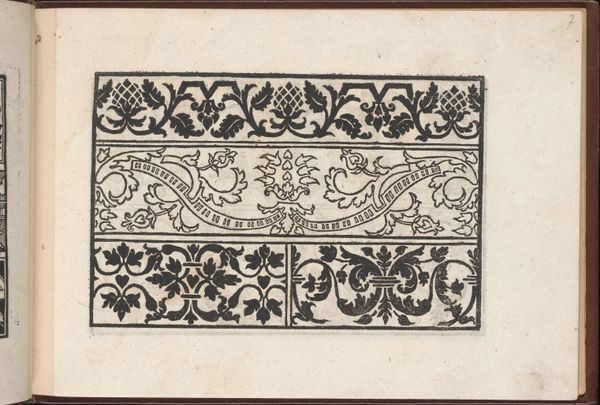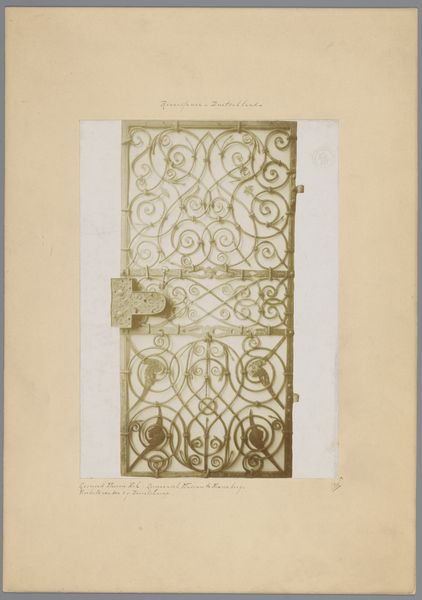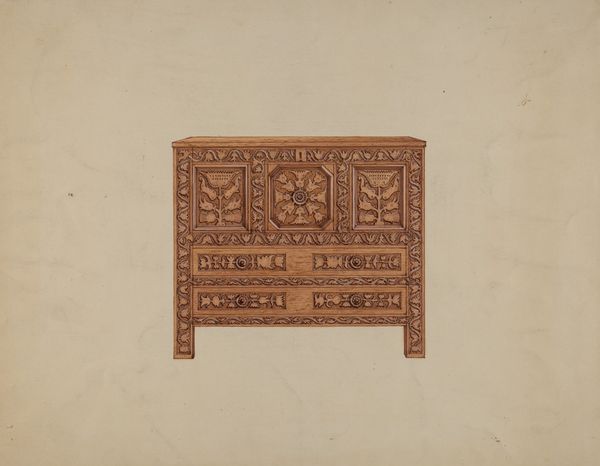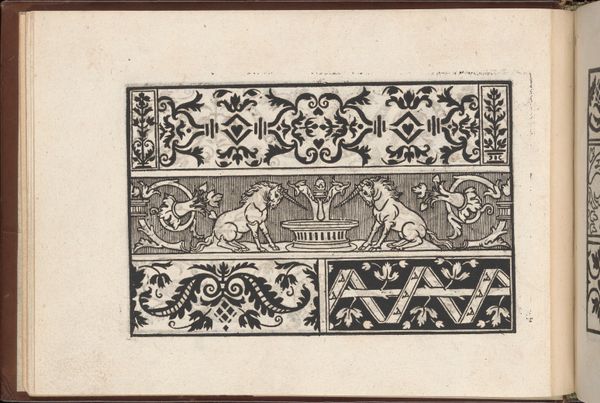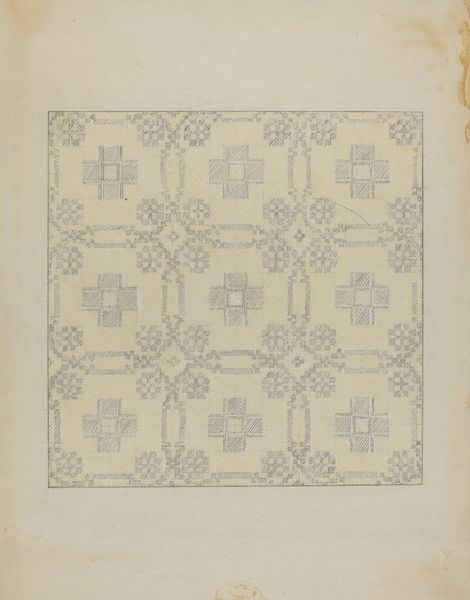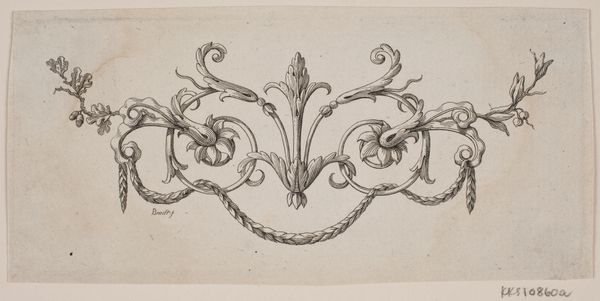
textile
#
folk-art
#
water colours
#
textile
#
folk-art
#
geometric
#
watercolour illustration
#
watercolor
Dimensions: overall: 35.8 x 45.9 cm (14 1/8 x 18 1/16 in.)
Copyright: National Gallery of Art: CC0 1.0
Editor: This is a watercolor drawing from around 1941 of a textile called "Tyler Coverlet." The red and grey geometric pattern is simple but intricate. I find the symmetrical nature of the design really comforting. What do you see in this piece, particularly considering its historical context? Curator: This coverlet drawing offers a fascinating window into the intersection of folk art, gendered labor, and the broader socio-economic realities of the 1940s. The medium itself, watercolor on paper depicting a textile, speaks to a desire to document and perhaps elevate a traditionally “feminine” craft. These coverlets often represent the culmination of countless hours of work, usually by women, within the domestic sphere. Does the repetitive nature of the pattern evoke any associations for you? Editor: It makes me think about the time and patience that goes into creating something like this, the hours spent on a single piece. I imagine it's really meditative to follow such repetitive patterns, but it could also be really exhausting and not particularly appreciated, or seen as just "women's work." Curator: Exactly. It's crucial to consider whose labor is made visible and whose remains invisible within the art historical narrative. The geometric motifs also echo broader trends in design and aesthetics during this period. Coverlets like these were often deeply connected to community traditions and the preservation of cultural heritage, resisting the homogenizing forces of mass production. Editor: That's a perspective I hadn’t fully considered. It makes me appreciate the drawing not just for its visual appeal but as a document of social history. Curator: It's about recognizing the narratives embedded in the everyday objects around us. Looking at this image reminds us to acknowledge and value the contributions of those whose work has been historically marginalized. What have you learned? Editor: How art can reveal more than its mere surface appearance, inviting reflection on social, historical, and even philosophical ideas. Curator: Indeed. By questioning and re-evaluating these assumptions, we open up richer and more inclusive understandings of art history.
Comments
No comments
Be the first to comment and join the conversation on the ultimate creative platform.
